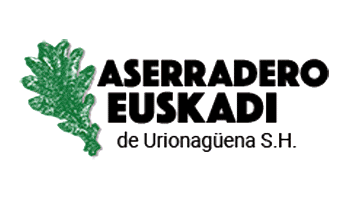
How many trees are needed to cool a city? They develop a model to define arboreal coverage objectives
A study suggests that planting trees does not reduce temperature in a direct or linear proportion: when applied to larger areas, the refreshing effect grows, but does so at an increasingly lower pace. It is known about the crucial role that trees have to combat heat, especially in urban areas. But, if you want to lower the temperature in a city in 1, 2 or 3 ° C, how many trees do you have to plant?
A research group from the Chinese Academy of Sciences developed a model to estimate the impact of trees on temperature reduction in urban areas. It is a scientific tool to help urban planners to define concrete afforestation goals. Arboreal coverage status and temperatures in four scientific cities were proposed to analyze how much temperatures lower as trees are added in urban areas of different sizes, from Apples and neighborhoods, even whole cities. That is, how the cooling efficiency depends on the covered area. in pixels equivalent to an apple, and calculated the temperature and the percentage of tree coverage of each section. Then, they grouped these areas in larger sectors, such as neighborhoods and districts, and analyzed the relationship between the increase in vegetation coverage and the reduction of temperature on each scale. Valuable quality for urban planning compared to climate change The convex power law follows: the thermal benefit of adding trees is higher on a small scale and decreases in a gradual rhythm as the area is extended. In other words, a 1 % increase in the tree coverage generates an effect of greater cooling in small areas, and the effect is stabilized when the tree coverage extends to large areas. This implies that, although each additional tree continues to contribute to urban refrigeration, the incremental impact decreases on a larger scale. For example, in cities like Beijing, a 1 % increase in the vegetable cover reduces the temperature of an apple by approximately 0 , 06 ° C. However, at the scale of the entire city, the same increase in the tree cover reduces the temperature by about 0.18 ° C. So, at the scale of an apple, add trees has a direct and useful cooling effect. But when this strategy extends to the entire city, the cooling becomes more efficient in general terms, but does not increase in a linear way. Covering the entire city, the temperature continues to fall, but each new tree does not cool as much as the first .Este hallazgo fue consistente en las cuatro ciudades que analizaron, lo que sugiere que el patrón podría aplicarse a diferentes tipos de clima y áreas urbanas. It is an indication that the relationship between the size of the area and the efficiency of trees could be generalizable and useful to plan the planting of trees in diverse regions. Knowledge about the power law in the efficiency of trees cooling It is useful for urban planners, responsible for environmental policies and municipal authorities, which could with more precision how much vegetation is necessary to achieve specific thermal reduction objectives. For example, in Baltimore, increasing forest cover by 6.39% could reduce Urban temperatures in up to 1.5 ° C, which could significantly help to counteract the island of Calimitations of the study and next steps The study was led by researchers from the Chinese Academy of Sciences, in collaboration with Steward Pickett, ecologist at the Cary Institute of Ecosystems studies, and was published in Proceedings of the National Academy of Sciences The authors recognize certain limitations. For example, that the model cannot indicate where trees should be planted, since that requires to consider social factors and equitable distribution. Cooling effects could vary with climate change, which threatens to make some warmer and dry regions in the future.
IT MAY INTEREST YOU
 BUENOS AIRES - The 146th National Congress Maderero de Faima will bring together experts in economics, construction and sustainable development in the region
BUENOS AIRES - The 146th National Congress Maderero de Faima will bring together experts in economics, construction and sustainable development in the region
Next Friday, December 13, Buenos Aires will host the 146th Madero Congress organized by the Argentine Federation of the wood and related industry (FAIMA). The event will take place from 8:30 a.m. to 4:30 p.m. at the 511 Auditorium of the Libertad Palace, located in Sarmiento 151, Autonomous City of Buenos Aires. The 146th Madero Congress of Faima, recognized as an annual meeting point for forest-industry, will be held on Thursday, December 12 and Friday, December 13 in Buenos Aires, and will be attended by prominent speakers and references in the sector, who will address Crucial issues such as economic dynamics, political challenges, and technological innovations in forest construction and development.
 Wooden gadgets for summer season
Wooden gadgets for summer season
Create spots that connect us with rest to get an extensive vacation feeling.
 Transforming the future of wood
Transforming the future of wood
Sustainability and innovation: The future of wood and furniture





















